10 fun places for hands-on learning in Pittsburgh
Learning is so much more fun when it involves active doing, rather than passive listening. Teachers and parents who share a child’s joy at being totally immersed in a new experience agree: Education isn’t confined to a classroom.
Pittsburgh kids from tots to teens have loads of exciting opportunities in Pittsburgh for great adventures combined with hands-on learning.
Whether it’s digging for bones like a real paleontologist, building bridges across Pittsburgh’s three rivers, designing buildings using massive foam building blocks, or painting a masterpiece inspired by the beauty of nature, there’s so much for busy hands to discover.
Here are 10 places to get started:
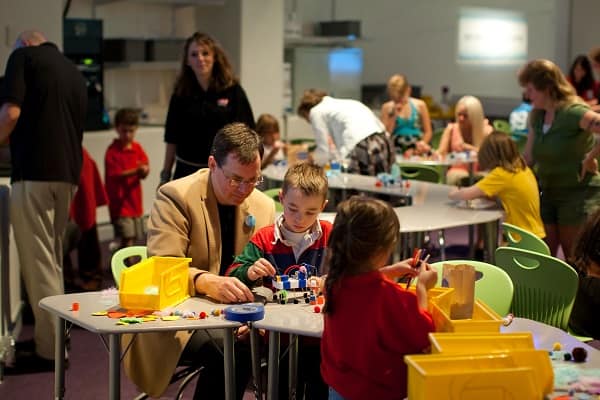
Carnegie Science Center
“Everything we do is hands-on because that’s a lot more fun than sitting and listening to someone drone on,” says Jill Rible, marketing communications manager for Carnegie Science Center.
A fab time can be had with a visit to the Fab Lab “Build It!” Workshops, where elementary students and teens can experiment with a 3-D printer or a laser cutter to create etched designs – or learn how to solder a basic LED circuit.
“Preschool Adventures” helps tots ages 4-5 get ready for school. Those little brainiacs can even learn about chemistry and engineering in weekly two-hour sessions. New spring sessions begin Jan. 31 with “Science Explorers” and March 28 with “In the Garden.”
Other science workshops focus on magnets, Minecraft, computer programming, Frozen Science, animation techniques, the science of bubbles, levers and inclined planes in “DIY Pinball Mania.”
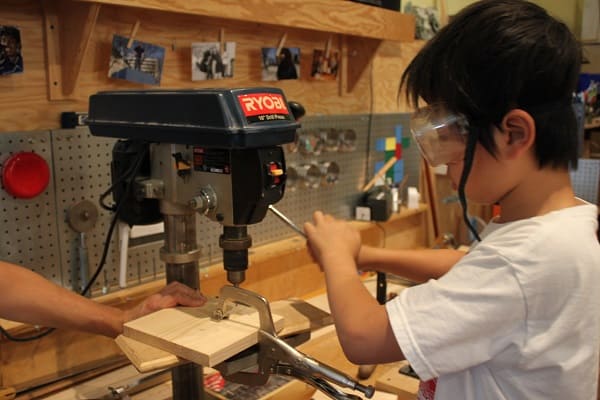
Children’s Museum of Pittsburgh
Making is a continuing theme at the Children’s Museum of Pittsburgh.
Make music with a collection of instruments or make a play on the Imagination Stage. Make a splash in Waterplay, where 20 new components allow kids to connect pipes to pump, spray and go with the flow, so to speak.
And then, there’s “MAKESHOP,” where kids can experiment with stop-motion animation, woodworking, soldering circuitry and textile processes like weaving and sewing. Plus, there is a chance to apply logic and figure out how things work with a collection of small toys and electrical systems that can be taken apart. Putting them back together might require a little more thought.
The Studio is a favorite destination for visitors, where creating art takes many forms. Check the calendar for days devoted to making paper, bookbinding, paper marbling and creating crystalline sculptures.
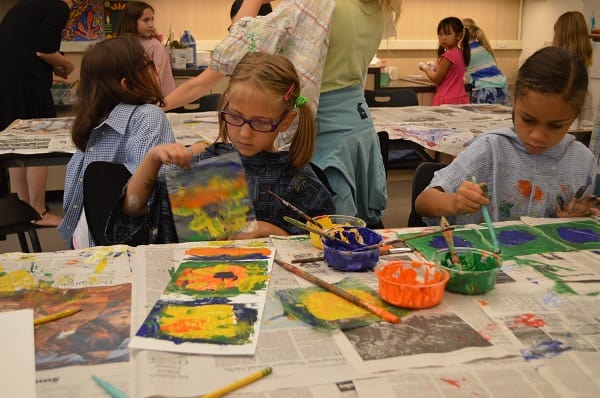
The Frick Art & Historical Center
“Hands-on, interactive learning is part of every program at the Frick,” says Amanda Gillen, director of education at the Frick. “Activities are meant to appeal across generations, so that children and parents or grandparents can interact together with our collections, touchable artifacts, art-making opportunities and outdoor activity.”
The Education Center offers three classrooms for hands-on interactive history lessons. The workshops are drawn from exhibits on-site, including history of transportation from the Car & Carriage Museum and objects from Clayton that illustrate how life was lived over 100 years ago.
A history lesson in “gaming” is part of a free program called “Once Upon a Time,” scheduled for 11 a.m. Jan. 14, will teach kids about how families amused themselves before TV and Xbox. Learn to play some old-fashioned parlor games, listen to a few good stories and imagine a cozy day from 100 years ago. Participants will make a simple game to take home.
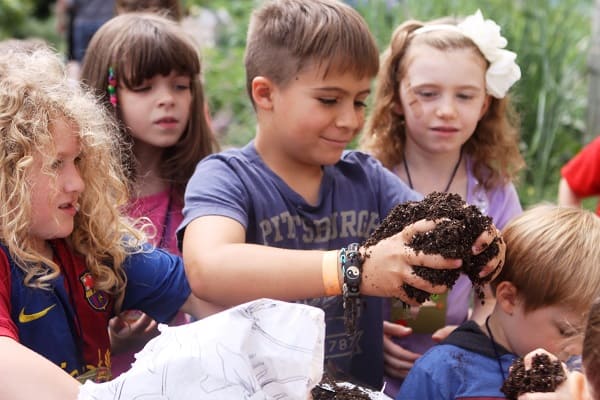
Phipps Conservatory and Botanical Gardens
Kids have a fascination with nature, growing things and looking closely at little creatures smaller than themselves.
All the classes at Phipps have components that connect to nature, says Heather Shannon, school and camp program manager in Phipps’ Science Education and Research Department.
The 2017 winter youth programs, running from January through April, feature topics related to healthy living, art, science and sustainability in fun and interactive ways.
A new program for ages 3-6, “ABC Nature and Me,” teaches youngsters to connect with nature as they learn letter sounds and practice their handwriting. Classes meet Tuesday mornings or Wednesday afternoons, beginning Jan. 17.
“Little Sprouts: Seed Series” for ages 2-4 meets on Mondays beginning Jan. 16. The season starts with Pine Trees and Me. A class on Winter Fairies and Habitats will spark imaginations. And My Wonderful Fruits and Veggies will likely encourage picky eaters to sample something new. Each of the sessions includes both a healthy living and an art component.
Why shouldn’t kids have a night on their own? “Kids Night Out” for ages 4-13 meets monthly from 6-8 p.m. on Friday evenings. Activities include Painting at Phipps and Biology in the ‘Burgh.
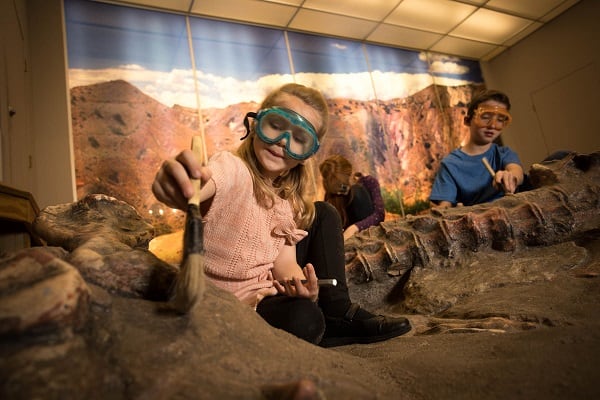
Carnegie Museum of Natural History
“Feel the coarseness of an African lion’s mane, examine a fly’s wing under a microscope, climb over giant ant statues,” says Kelsey Shea, spokeswoman at Carnegie Museum of Natural History, about Discovery Basecamp, a new permanent exhibit. “New specimens, activities and programming are always being added, so there’s something new to discover with every visit.”
Kids become junior paleontologists – armed with safety goggles, scraper and brush – digging for fossils at Bonehunters Quarry. This interactive exhibit replicates searching for fossils at Dinosaur National Monument in Utah, where many of the museum’s dinosaurs were discovered.
An upcoming exhibition, “Amazing Butterflies,” opening Jan. 21, will feature a maze that invites visitors to shrink down to the size of a butterfly and climb in pupa pods. Crawl like a caterpillar through a monarch tunnel, soar down a butterfly zip-line, and fend off a hairy plant attack. The exhibition is designed to teach kids about butterflies, caterpillars and their environments.
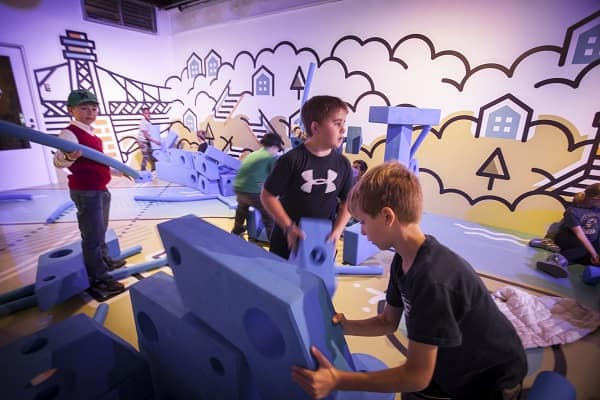
Senator John Heinz History Center
“History can be challenging for our young visitors to understand and the History Center recognizes that the past is best brought to life through hands-on and interactive experiences,” says Mariruth Leftwich Ph.D., director of education.
The History Center proves the point with two hands-on exhibits geared to kids.
Discovery Place features an Engineering Playground where kids can build bridges across Pittsburgh’s three rivers or design buildings using massive foam building blocks. At other stations, they can explore sound and tempo, design a piece of pop art on the Everbright machine, and create new products using aluminum.
In Kidsburgh – Hey, that sounds familiar! – kids can serve up Isaly’s “ice cream” in a play deli or milk a full-scale fiberglass mooing cow. An interactive model of Pittsburgh allows future city planners to design their own metropolis using models of buildings, boats and sports stadiums. Test your memory with the “It’s Not Just Cows” concentration card game or zoom down a 12-foot spiral slide, nicknamed the “Liberty Tube.”
Coming this spring are two kid-focused programs. “Hop into History” will combine music, dance and games for ages 2-5. “Storyburgh” will be 30-minute interactive programs for ages 3-8.
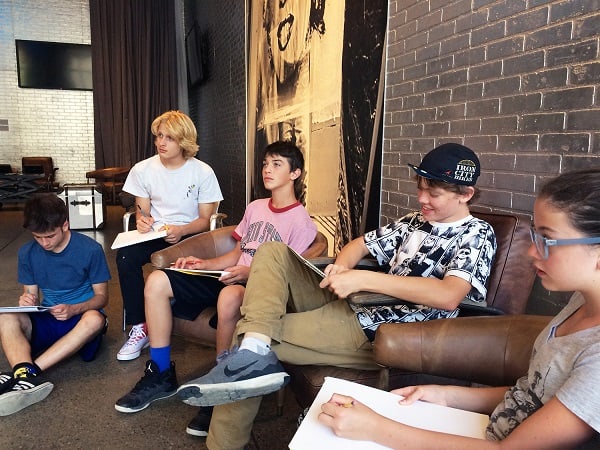
The Andy Warhol Museum
Pop art continues to pop with the youth culture at The Andy Warhol Museum.
Teen sketch parties are held in conjunction with changing exhibitions. Teens create figure drawings layered with stamps, stenciled patterns and Dr. Martin’s dye, similar to Andy Warhol’s drawing technique in the 1950s. The happenings include a tour of the exhibition with museum staff.
“Half-Pint Prints” is offered for ages 1-4 four times a year. Kids work with The Warhol’s artist educators to create silkscreen prints.
“Visitors can always make art in our underground art-making studio The Factory,” says Jessica Warchall, communication manager.
Literally underground, The Factory studio is in the basement. Warholian skills are challenged by some of Andy’s signature art-making techniques – blotted line drawing, acetate collage and silkscreen printing.
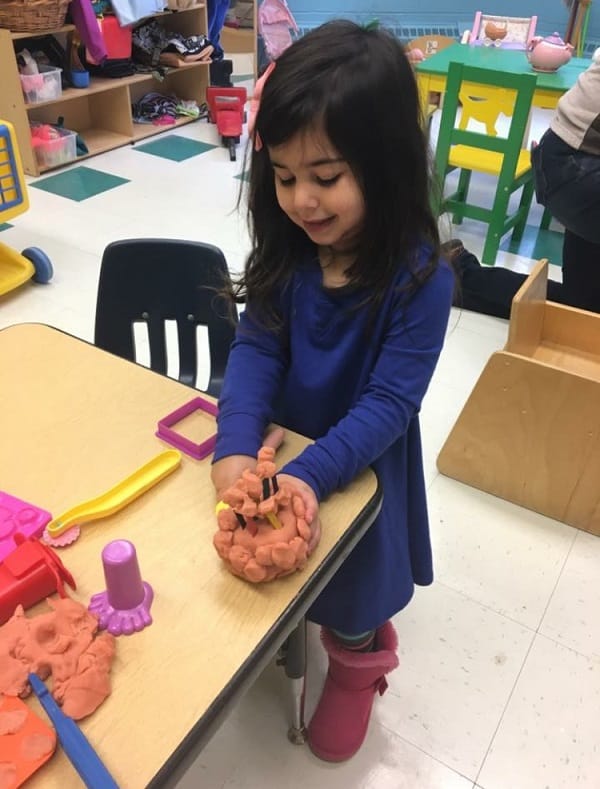
Stay ‘n Play
Hands-on play is instrumental to early childhood development and builds the basis for creativity and life-long learning, says Randi Daffner, who handles programs and scheduling for Stay ‘n Play, located inside Beth El Congregation of the South Hills.
“The beauty of Stay ‘n Play is that we try to offer a positive environment for every child,” Daffner says.
In the fine motor skills room, kids can construct tracks and mini-towns at a train table; play make-believe in a kitchen, dress-up or dollhouse station; produce crafts; play games; and do puzzles.
Tricycles, push-powered vehicles, bouncing balls, climbing structures and basketball hoops fill the gross motor skill room, providing a physical outlet for energetic bodies. Younger toddlers can find their bliss with ride-on toys, walkers and gym mats for tumbling.
“For down time, we feature an extensive library and beanbags for relaxing and taking in a good book,” Daffner says.
More structured events and activities include PJ Library story time, Mommy and Me Yoga, Bread Baking, Make-Your-Own Chia Pet and holiday celebrations.
The cost is $5 a day, with family memberships priced at $80 for the season.
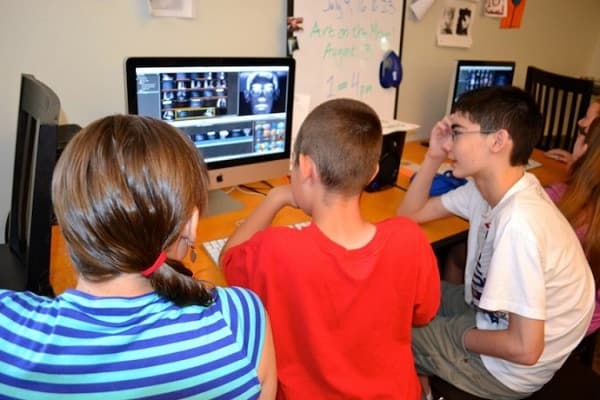
Pittsburgh Filmmakers/Pittsburgh Center for the Arts
For kids with a serious interest in art and media, these schools offer some serious programming. From fundamentals of web design and figure drawing to ceramics and sculpture, young artists are offered a wide range of creative opportunities.
The basics are covered, along with more exciting endeavors.
Do your kids love quirky animation? Aspiring filmmakers ages 5-7 will combine skills in sculpture, collage, painting and storytelling in “Create & Animate.” Their crazy characters and sets will all come together in glorious stop-motion animation.
In “Mosaics & Handbuilt Ceramics,” kids ages 8-10 will create a collaged mosaic. In this single class, they will learn about ceramics, assemblage and sculpting techniques. It’s a great class for budding sculptors to build from.
Tots have their artsy day, too. For ages 2 and up, Family Open Studios is scheduled on Friday mornings, and Family Readers is set for Sunday afternoons. Topics include clay explorations, macramé, digital animation, ceramics, photography, watercolor painting and stained glass.
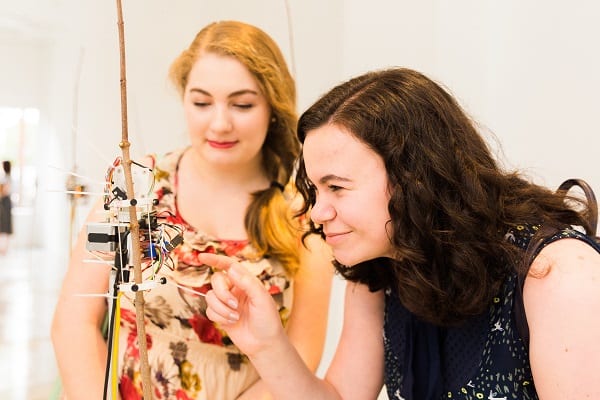
The Mattress Factory
ArtLab at The Mattress Factory offers hands-on activities inspired by current museum artists and rotating themes. It’s held the second and fourth Saturday of each month.
Mini-Factory, for ages 3-5, explores a variety of themes and installations with a story time and hands-on project.
After-school programs for elementary school students are free and held every Wednesday. For high school students, a free — and application process is required — Teen Art Cooperative is a year-long program in which teens learn what it’s like to participate in a creative practice.
“Programs like ours are important because they encourage participants to develop a curiosity about the world around them,” says Karen Norney, education programs manager. “Students gain a desire for exploration and are more open to new ideas.”